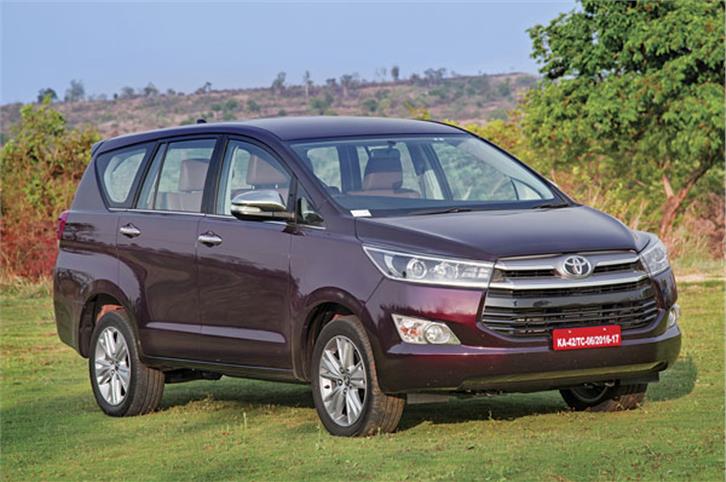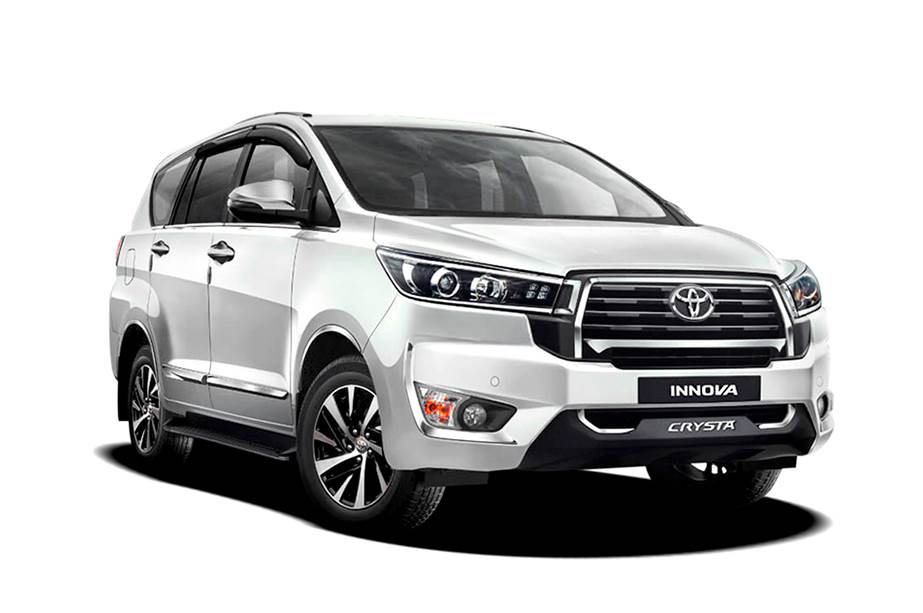Toyota Innova Crysta review, road test
After 11 years, Toyota has finally launched the all-new Innova and taken it even more upmarket. We find out if it’s worth the extra premium.
Published on Jun 27, 2016 02:53:00 PM
3,30,875 Views
Follow us on

The Crysta comes 11 years after the original Innova.

Feels as heavy as a tank, but is equally solid and reliable.

To say the Crysta’s interiors have gone upmarket would be an understatement. The cabin is far more plush than the previous Innova’s and more in line with a premium car rather than an MPV. The single-piece dashboard, with its swoopy design, is unique and the multiple surfaces and textures work well. The all-black interior theme with a dark wood trim suits the cabin really well. The liberal use of dulled silver-finish accents running down the sides of the centre console, across the dash, door pads and side vents look really classy. Toyota has also given the Crysta mood lighting with blue LEDs lining the roof light unit in the front and running across the roof in two arcs in the middle.
Other plush bits include felt lining for the door armrests and sun visors although the door pads in the front aren’t of the same high quality as those in the rear. Also, some plastics have a hard and shiny feel, especially in the lower section of the dash.
The VX versions come with a mix of artificial leather for the seat sides and real leather for the seat inner portions. While the top-of-the-line ZX auto gets a tan leather interior, the similarly specced manual car gets all-black leather. On the whole, the colour schemes, lighting and quality of materials makes the mood inside the Crysta very lounge-like, especially in the higher variants.
It’s important to note that though Toyota has released prices starting from the base E variant, specs for E and G trims have not been disclosed. The base versions, according to Toyota, will be made to order and hence, variant details are only available for the GX, VX and ZX cars.
The Crysta is far better equipped than the previous Innova with features that you would find in a comparably priced luxury car. So, you get climate control or an auto air-con system with vents for the middle and third row though there’s no provision to control temperature from the rear. Infotainment is now handled by a 7-inch touchscreen with in-built navigation and a reverse camera display. There’s also a display screen on the centre console that shows the regular trip data and also replicates some key navigation, stereo and phone info.
What’s a neat touch is after feeding in fuel cost, the trip computer can display the fuel used both in litres and in rupees. There is also an Eco drive indicator that scores your driving style, helping you improve efficiency. For safety, there are seven airbags that include a knee bag for the driver and full curtain bags that extend all the way to the third row.
Coming to the all-important seats, the front buckets are now a touch larger than before with more under-thigh support and on the ZX cars, you get, for the first time, an eight-way power adjustment. The chunky steering, which feels good to grip, adjusts for rake and reach too. A useful touch, possibly inspired by the VW Vento, is a small lever allowing rear passengers to move the front passenger seat to optimise legroom. Also pampering middle-seat occupants are foldable seat back trays with cupholders. The captain seats on the seven-seater are now even more comfortable thanks to a wider seat base and more legroom.
The middle seats can be reclined as well but sadly, this throws up a serious flaw. Reclining the seat pushes the lower portion of the backrest outwards, forcing you to arch your back. Also, the armrest rises upward and does not stay level.
The third row is where you’ll find the biggest improvement over the earlier car. Access to the last row is quite easy, thanks to both the captain and bench seats having a handy, one-touch tumble mechanism. Although with a high floor you still sit knees up, there is significantly more legroom now and if you squeeze in three people, there’s even a three-point seat belt spooling down from the roof for the middle passenger.
The Innova has the ability to store an astonishing 20 bottles of water, but sadly, it has only one USB port for both data and charging. Charging more devices will require a car charger to be plugged into any of the two 12V DC sockets. By way of storage, the Innova has dual gloveboxes with a cooled upper unit. However, both are fairly small and perhaps a single, larger unit would have been better. The good news is that the increased length has been well utilised in enlarging the luggage space – you can now fit a couple of small bags or a full-sized suitcase with all three rows up.
Copyright (c) Autocar India. All rights reserved.



Comments
Member Login
Personal Details
No comments yet. Be the first to comment.